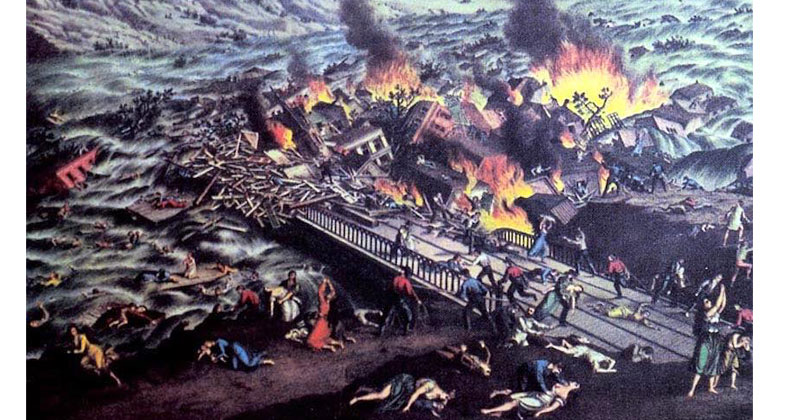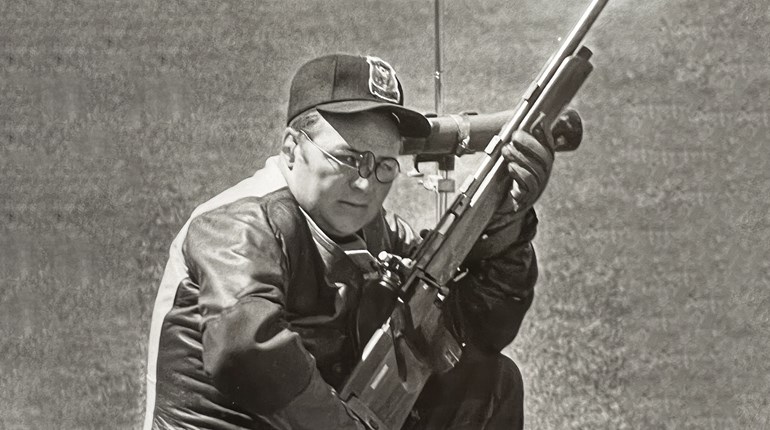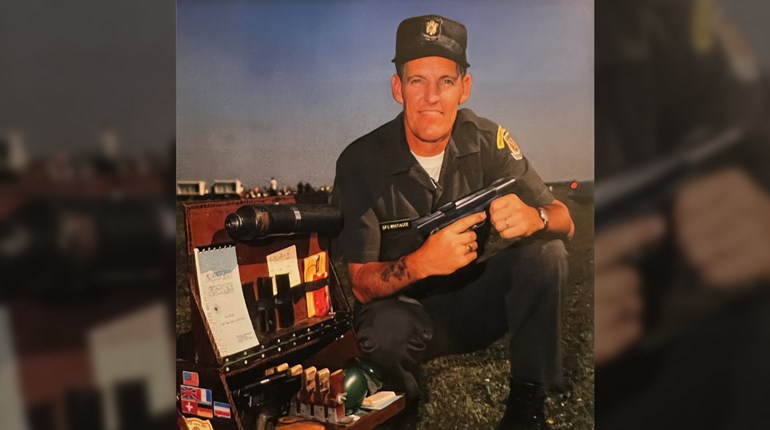
In the spring of 1889, Johnstown, Pennsylvania, about an hour’s train ride southeast of Pittsburgh, was a booming blue-collar town of steel mills and coal mines. Very few of the workers and their families were getting rich, but no one went hungry either, and life in general was good. A visiting journalist described the town as “new, rough, and busy, with the rush of huge mills and factories and the throb of perpetually passing trains.”
The year, thus far, had been a very wet one for Johnstown. Some 14 inches of snow had fallen in the surrounding mountains over winter, and that moisture, combined with the seemingly continuous spring rains, had kept the rivers that passed through town swollen for months. Not that flooding was anything new to Johnstown. Located at the mouth of a steep, narrow valley, the city streets flooded most every spring. Residents had learned to live with it and wait things out. The water would eventually recede; it always did.
On May 31, a Friday, it began raining yet again, but this time it was unlike anything anyone had ever seen. An estimated 6 to 8 inches fell in just 24 hours--the worst downpour ever recorded in that part of the country to date. The rivers were rising more than a foot per hour, and speculation was running high that today might just be the day “the dam” would finally break.
The dam in question was the South Fork Dam, located 14 miles up the valley and owned by the South Fork Fishing and Hunting Club, a group of about 60 millionaires and well-to-do businessmen from Pittsburgh. The most famous of the club’s members was Andrew Carnegie, America’s steel-industry magnate. Club members used the exclusive grounds and lake as a summer and weekend getaway for themselves and their families.
The earthen dam—72 feet high and 900 feet long—backed up 450 surface acres of Lake Conemaugh. Nearly 70 feet deep in places, the lake stretched a mile wide and 2 miles long, the water estimated to weigh 20 million tons. “A mighty body of water to be up there on the mountain,” quipped one Johnstown resident.
But the dam had burst before...several times, in fact, during its long history, yet little or no damage had ever resulted to Johnstown. The dam had been repaired after each break, but how well the most recent repairs were made was the question on people’s minds. Would the dam hold in such a rainfall as they were now experiencing, with the lake rising an inch every 10 minutes? That answer, unfortunately, was no. The water first breached the dam near its middle by late morning, then about mid-afternoon the entire earthworks suddenly gave way in a rush.
Civil engineers would later calculate that the water roared down the valley at treetop hight, moving at a velocity and depth comparable to that of the Niagara River as it reaches Niagara Falls—and it did so for 36 minutes before the lake finally emptied itself. Woodvale, one of the small villages upstream of Johnstown, was the first to be hit. The village was wiped off the map; about one in every three residents was drowned, with an official total of 314 men, women, and children killed.
The massive wave of water and the debris it picked up along the way—40 feet of water, fence posts, boulders, logs, whole trees, telegraph poles, houses, outbuildings, roofs, cows, horses and human beings— hit Johnstown at 4:07 p.m., destroying the city in just 10 minutes. The power of the flood was beyond belief. For instance, 30 railroad locomotives, some weighing 80 tons, were overturned like toys and scattered anywhere from 100 yards to more than a mile from their original location. Clinging to whatever flotsam they could grab, people could be seen bobbing downstream for miles at speeds approaching 40 miles per hour.
One of the strangest rides of the day was experienced by James Walters, a lawyer. Swept out of his house on Walnut Street, the wall of water took him spinning across town on the roof of his house. When his roof smashed into the side of a brick office building, Walters was thrown headlong through a window...and found himself drenched and bruised yet still alive, lying in his own law office.
But many, many more were not so lucky. Although there was never an exact, final count of the number killed, 2,209 is generally accepted as the official total. Hundreds of people were never found, and one out of every three bodies recovered would never be positively identified. The flood had suddenly taken the life of one of every nine people in Johnstown.
By dark, the entire city was a lake anywhere from 10 to 30 feet deep, the destruction so nearly complete that all many could do was pray. “We knew…that many of our fellow citizens were perishing, and feared that there could be no escape for us,” the Reverend Chapman would later write. “I think none was afraid to meet God, but we all felt willing to put it off until a more propitious time…”
George Gibbs, one of the reporters for the town newspaper the Tribune, wrote, “Hands of the dead stuck out of the ruins. Dead everywhere you went, their arms stretched above their heads almost without exception—the last instinct of expiring humanity grasping at a straw.”
The 9/11-scale tragedy of its time, details of the Johnstown flood filled the entire front page of the New York Times for five straight days. As a result, Americans responded by the tens of thousands to help. One of the first to arrive and begin coordinating relief efforts was 67-year-old “Angel of the Civil War Battlefield” Clara Barton and her newly-formed American Red Cross with its contingent of 50 doctors and nurses.
In the days and weeks that followed, after all those who had survived were rescued and the dead buried, the finger-pointing began. Had the great flood been an act of God or an act of man? George Swank, editor of the Tribune, had no doubts. “We think we know what struck us,” he wrote, “and it was not the hand of Providence. Our misery is the work of man.”
On the other hand, Forest and Stream, a national fishing and hunting magazine, editorialized in favor of the South Fork Fishing and Hunting Club, claiming that, as sportsmen, the members were essentially “good men” who must be “suffering terribly.” As for the members of the club themselves, no one was talking.
Several damage suits were brought to court during ensuing years, but the club was never found guilty of any negligence and not a penny was ever collected from the club or any of its members. In the judgment of lawyers who have examined the facts in recent years, it seems likely that had the damage cases been conducted according to today’s standards, the club and several of its members would have been found guilty. The upshot of the tragedy is that public indignation eventually prompted changes in American law concerning strict liability.
Historian David McCullough, in his book The Johnstown Flood, summed up the disaster by writing, “So while there is no question that an ‘act of God’ (the storm of the night of May 30-31) brought on the disaster, there is also no question that it was, in the last analysis, mortal man who was truly to blame.”
In September of 1889, four months after the dam gave way, Andrew Carnegie and his wife visited Johnstown to view the flood damage. Before leaving town, Carnegie agreed to build a new public library where the previous one had stood.






































